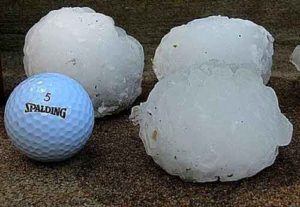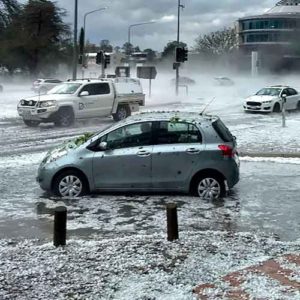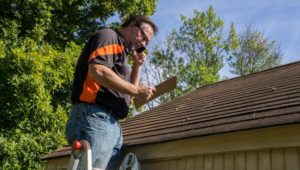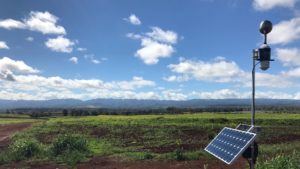As Hail Occurrences Increase, So Do Your Insurance Rates
In an article by The Weekly Planet, Alex Kubicek says that “Hail is expanding its footprint across the country at the same time that it is becoming more frequent in the central United States.”
Who is Alex Kubicek? His Twitter feed says – Weather guy, CEO of @UnderstoryWx, Board gamer.
 In August of 2021, Wealth & Finance, an international monthly publication dedicated to delivering high quality informative and up-to-the-minute global business content recognized Understory Inc with top honor of Best Climate Change Insurance Solution 2021 for their work rewriting insurance for the era of climate change.
In August of 2021, Wealth & Finance, an international monthly publication dedicated to delivering high quality informative and up-to-the-minute global business content recognized Understory Inc with top honor of Best Climate Change Insurance Solution 2021 for their work rewriting insurance for the era of climate change.
In layman terms. Alex Kubicek is a super, hard-core weather geek.
When scientists and climatologists list climate change’s biggest (or extreme) threats – fire, floods, heat waves, & drought are at the top. With occurrences of hail increasing in spread and severity, hail is on its way to making that list.
Changes in Climate Extremes and their Impacts on the Natural Physical Environment white paper defines An Extreme Weather Event as, “the occurrence of a value of a weather or climate variable above (or below) a threshold value near the upper (or lower) ends (‘tails’) of the range of observed values of the variable.” Source.
How much money does hail damage cause per year in the United States?
The catastrophic effects of extreme hail occurrences include:
Crop Damage – Hail annually causes billions of dollars in damage worldwide to crops and property combined.
Personal Property Damage – In 2019, over 7.1 million US properties were affected by hail damage. Between 2008 and 2014, US insurers paid roughly $5.37 billion for auto insurance claims, according to hail data. The highest claim frequency was recorded in 2011 with 4.3 claims per 1,000 insured automobiles in the US due to hail damage. Source.
How do these hail occurrences effect personal property?
 From damaged roofs, and personal property damage to hail damaged vehicles – insurance companies are paying out millions per year to repair the effects of hail damage. We know this.
From damaged roofs, and personal property damage to hail damaged vehicles – insurance companies are paying out millions per year to repair the effects of hail damage. We know this.
The problem though is how many of these hail damage claims are actually legitimate?
It works kind of like this. A hail storm hits a portion of Austin, Texas. Not the entire city but more like a span of approximately 25 city blocks. Within those 25 blocks are residential neighborhoods, a couple of car lots, and a shopping center.
How do these hail occurrences effect property and casualty insurance companies?
After a hail storm, it is common for local or out-of-town roofing contractors to visit these neighborhoods and distribute sales paraphernalia in hopes of earning the contract to repair the hail damaged roofs. The same goes for paintless dent repair companies.
The problem is that not every roof or vehicle has the same severity of damage. Insurance fraud is a significant problem after major storms, partly because crooked contractors deceive customers about the extent of roof damage.
“If there is a high rate of weather related home damage or claims being filed in your neighborhood, your insurer will raise the rates for the entire area. This rate increase will affect your premiums regardless of whether or not you recently filed a claim.” Source.
How do these hail occurrences effect people?
“We really don’t know a lot about how the weather affects people. There has to be a better way to understand the weather than what we’re doing,” says Kubicek.
Kubieck’s company Uderstory is seeking to find a better way to detect the actual effect each unique hail occurrence can have on a farmers crops, a personals personal property, their vehicles, etc. This, in turn, will better help property and casualty insurance adjusters understand just how much damage was sustained based on scientific data.
What does this mean?
Understory has developed what is called an “unmatched hyperlocal network” of ground-level sensors spaced two miles apart throughout a city or other area. Each sensor measures wind, rain and hail by force, direction and angle of impact, 120,000 times a second. That data allows analysts to precisely estimate storm damage, he said. Source.
 With this technology, insurance estimators can go into a hail storm damaged area with an understanding of how much damage they should expect to see. If a roofing company or a paintless dent repair company has already estimated the cost to repair the damaged sustained on a roof or vehicle before the insurance estimator has actually seen the damage, they can quickly determine if their estimate is within the range of the data they have received from the sensors.
With this technology, insurance estimators can go into a hail storm damaged area with an understanding of how much damage they should expect to see. If a roofing company or a paintless dent repair company has already estimated the cost to repair the damaged sustained on a roof or vehicle before the insurance estimator has actually seen the damage, they can quickly determine if their estimate is within the range of the data they have received from the sensors.
If a contractors estimate is grossly inflated, the insurance adjuster can visit the property to re-evaluate the damage and deliver a reimbursement amount that more accurately reflects the damage.
Ultimately, this technology will prevent the insured from incurring a cost increase on their property and casualty insurance and vehicle insurance policies.
Hail Sensors in Hail Alley
 Currently, there are over 600 sensors placed strategically across hail alley. Understory has installed sensors in Dallas-Fort Worth, Denver, Houston, Kansas City, and St. Louis – all producing what Kubicek calls “litigation-quality data” with a 97% accuracy rate that can hold up in court.
Currently, there are over 600 sensors placed strategically across hail alley. Understory has installed sensors in Dallas-Fort Worth, Denver, Houston, Kansas City, and St. Louis – all producing what Kubicek calls “litigation-quality data” with a 97% accuracy rate that can hold up in court.
The insurer hopes that the data obtained from the sensor will help to more effectively handle future claims.
